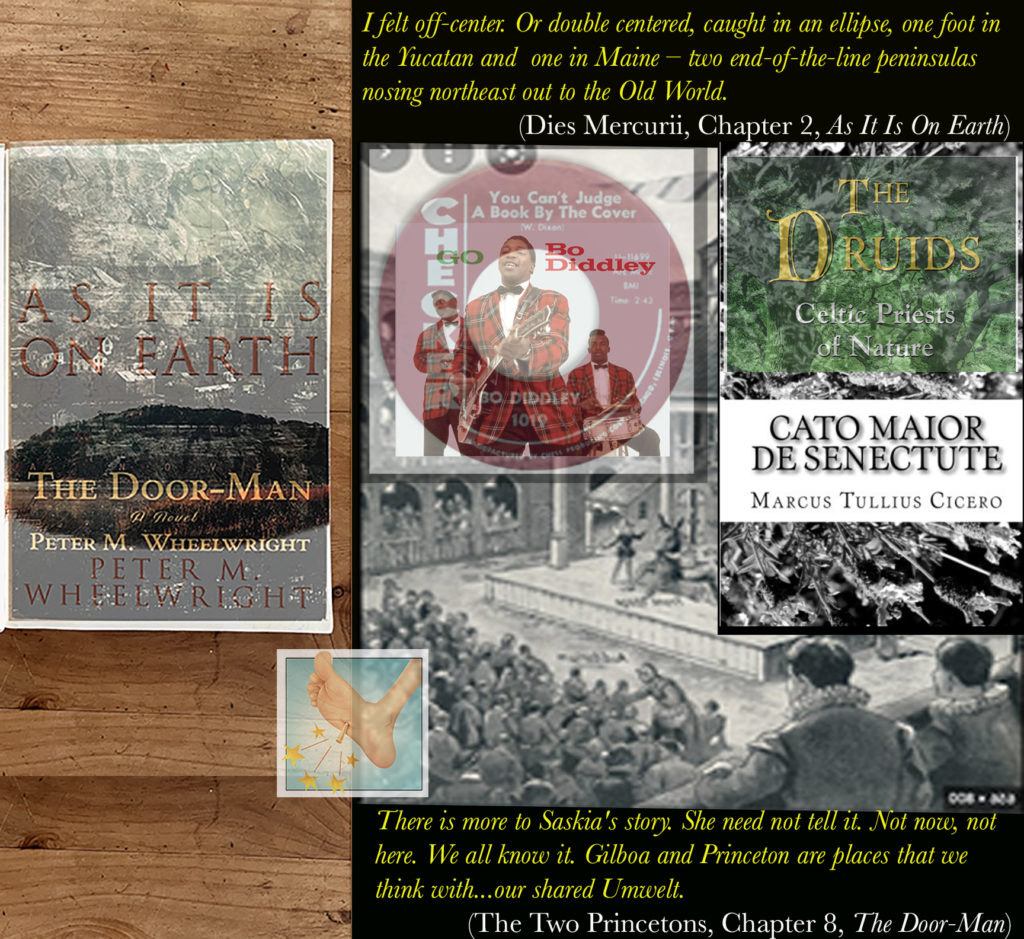
I am often asked about the descriptions of the natural world in my novels. Folks seem to like how I… “bring such places to life.”
I avoid stating the obvious – that landscapes are already quite alive without any help from me; I’m just glad my writing doesn’t kill them off.
Instead, I respond, with a dose of druidry and a self-effacing chuckle to disguise my seriousness of purpose: “They’re characters in my stories. Just like the men and women in the books. Places in the natural world are actors that have their own way of being, they respond to events, they produce events,…they make things happen.”
In other words, for me, places have agency.
Cato Maior, better known as Cicero, knows what I mean. He said it well in his essay, Cato Maior qui est scriptus ad te de senectute: “I follow Nature the best of guides, as I would a god, and am loyal to her commands…”
His point here is that the natural world…talks.
And when the books you write are trying to drive home “the inextricable connection between natural history and human history,” there is necessarily going to be a great deal of jibber jabber between the two.
The passive “stage-set” theory – you remember, all the world’s a stage – misses this conversation; it misses the lively splinter from the wooden planks on Shakespeare’s stage that, when lodged in a mere player‘s foot, knocks him/her off script.
So, yeah…I like writing about places in the natural world as if they’re animate beings. But it’s not Animism or Bergson’s Élan vital that motivates me. I just like imagining the earth in dialogue with humans. Swapping stories, so to speak, about matters of shared importance.
And I also like going far afield for my interlocutors. Like ellipses with two foci, both As It Is On Earth and The Door-Man feature a temperate zone “character” and a tropical zone “character” – Maine and The Yucatan (AIIOE); Upstate New York and The Everglades (TD-M). It works for me because I find that different Natures are quite good at drawing out the different natures of the men and women who inhabit them.
Perhaps that’s why the covers of my novels are interchangeable.* Both try to “bring such places to life.“
Bo Diddley misspoke: “You can judge one by looking at the other.”
*And lovely covers they are – thank you, Andy Carpenter Design
Return to Ruminations







